I’ve been in a couple discussions lately that have highlighted the many tradeoffs we have to consider when making prairie management decisions. Every manager faces these, and they can start to feel paralyzing if we let them. Just as in all aspects of life, we just have to make the best decisions we can. We can’t not act, but we can evaluate the actions we take, learn from what happens, and try to learn and adjust.
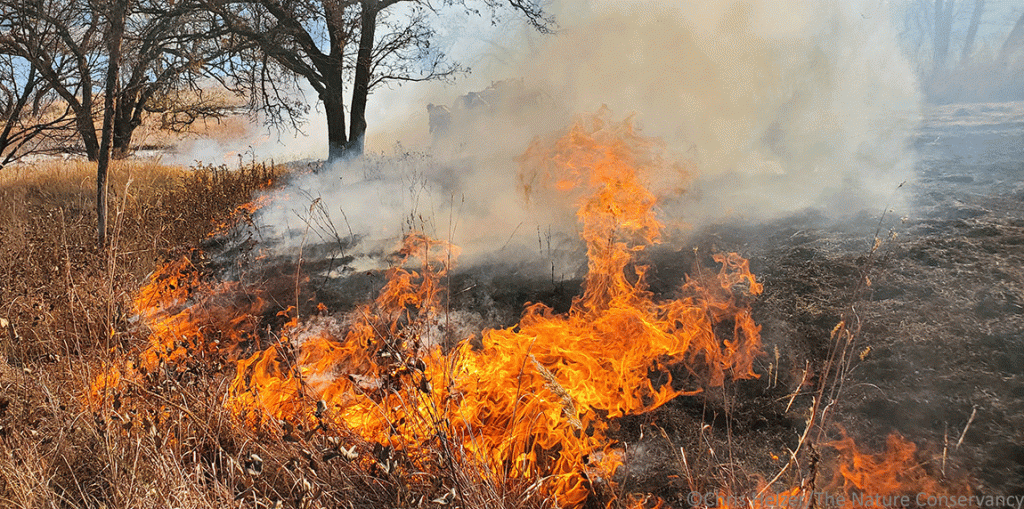
I’m going to focus on tradeoffs around prescribed fire in this post, but there are many others – especially with regard to the use of grazing and herbicides. Each of those topics will get their own blog post in the near future.
Prescribed fire is a great tool for removing thatch, litter, and other aboveground vegetation. It can kill some trees – like eastern red cedars around here – and can top kill other woody plants and set them back (with variable degrees of effectiveness). Fire can also play a key role in manipulating the competition between prairie plants, especially in terms of reducing the dominance of some species and releasing others from that competition, at least for a while. Because recently-burned areas are attractive to grazers, combining fire and grazing can open up a lot of interesting and useful options for managing habitat structure for animals and growing conditions for plants.
At the same time, fire is inherently destructive. Even fires conducted during the dormant season can kill small animals, including both invertebrates and vertebrates. Animals overwintering in the thatch or inside aboveground stems are especially vulnerable to fire. So are any animals who might be active during the winter but not able to quickly move to safety in the face of oncoming fire.
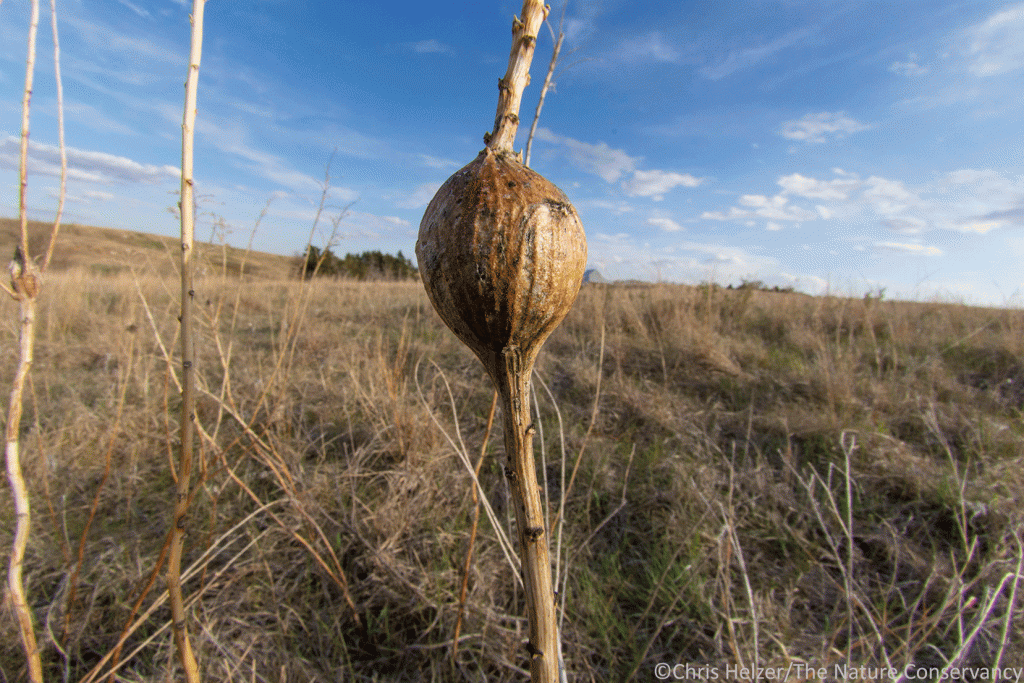
Growing season fires can also be problematic for animals, though. Whether prescribed fire is employed during the spring, summer, or fall, if animals are active, they’ll be at risk from fire and smoke. Some, like birds or strong-flying invertebrates, have an advantage in trying to escape fires, and others have burrows they can use as cover. Others have to find other options to stay safe, but not all of them will be able to.
Within the plant community, fire always favors some species over others. The winners and losers are often determined by the season of fire. A fire during the dormant season tends to favor plant species just getting ready to germinate or start their annual growth. The removal of aboveground cover means the sun will warm up the soil earlier than in unburned areasa and that can give early season plants a real jumpstart. Because fire exposes the soil, it also facilitates the germination of seeds that rely on exposure to light. The consumption of thatch by fire also means that any seeds falling to the ground later in that first season after the burn have an increased chance of making the seed/soil contact they need for future germination.
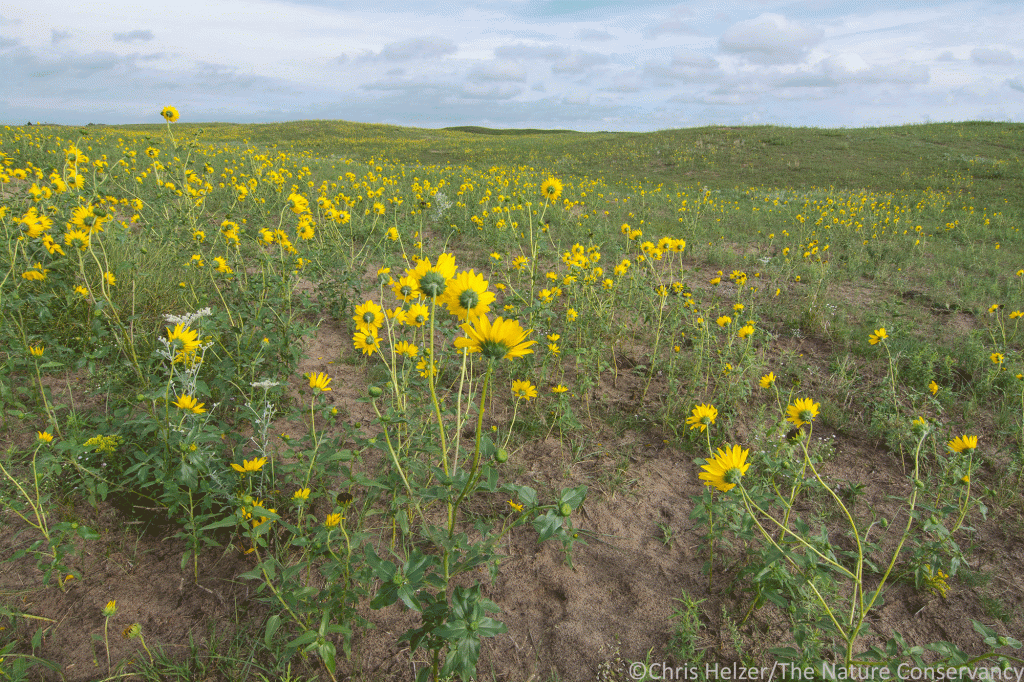
Fires conducted later in the growing season will have a negative impact on any plants in the midst of their peak growth phase or flowering period. However, plants that are poised to germinate or begin their peak period of growth immediately after the fire occurs will get a big boost. A May burn in our area, for example, will suppress the vigor of many spring grasses and wildflowers, giving early summer plants fairly unimpeded access to light and nutrients as they start growing. Smooth brome is a big invasive species challenge for us and burning when that species is just beginning to bloom can really knock it back, helping to flip the competitive balance between brome and many summer plants. At the same time, however, many native cool-season grasses, not to mention lots of spring wildflowers, will be similarly impacted, so we wouldn’t want to burn any site in May every year.
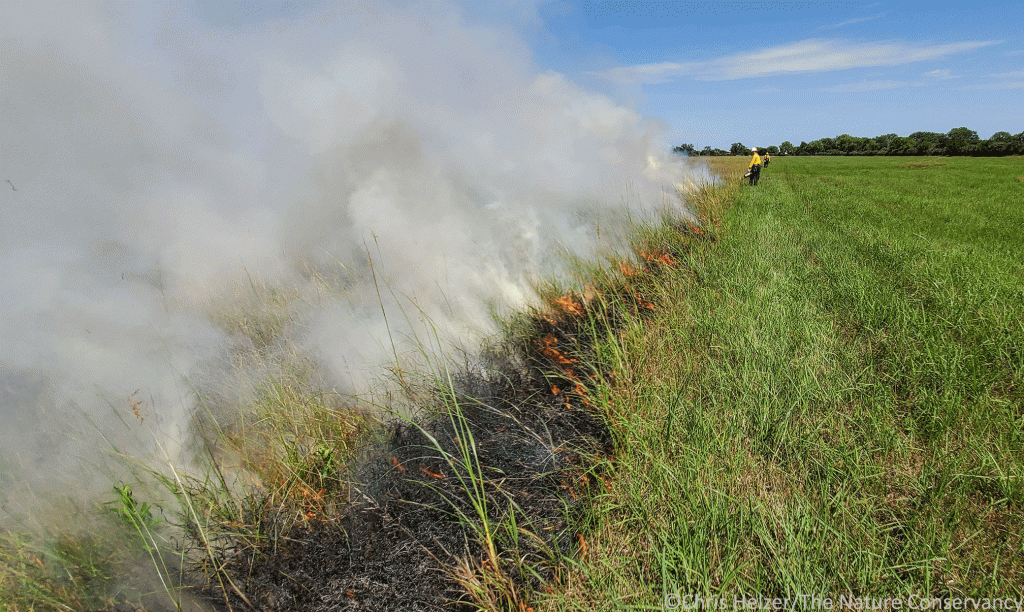
The impacts on plants from fires set later in the growing season are similar, in that the timing of the fire determines which species will be positively or negatively impacted. Most plants that have already flowered and produced seed won’t be much affected because they will be shutting down for the year, though that year’s seed crop might be consumed by the fire. Any plants actively growing and trying to produce flowers, rhizomes, or buds, will be interrupted by the fire and lose a lot of their energy investment from the season. Some may attempt to start again, but others will give up and wait for next year. Either way, they will be mostly removed from the field of competition for the season. In contrast, any plants that start their growth or hit their stride soon after the fire will have a big advantage because the fire will knock back their competition and allow them full access to sunlight.
No prescribed fire is benign. Regardless of when a fire happens, it will have both positive and negative impacts. Because of that, it’s really important to provide refuges (unburned areas) whenever a fire is conducted. Refuges can give mobile animals a safe place to escape to during or after the fire. For plants and less mobile animals, refuges can help ensure that at least some portion of populations aren’t affected by a fire.
Refuges are particularly important in fragmented landscapes, where prairies persist as small isolated remnants. The smaller and more isolated a prairie is, the bigger (as a percentage of the whole) a refuge needs to be. In landscapes where the burned area is surrounded by miles of other prairie, that surrounding prairie can provide adequate refuge (assuming it’s not also being burned in the near future).
In a small isolated patch, it can be important to make sure at least 1/3 or ½ of a site is unburned, and that no habitat type (wet areas, hill tops, etc.) is completely included within the burned area. Refuges can also be left within a burned unit by burning when humidity is relatively high (as one example) and/or by refraining from ‘touching up the interior’ after a fire by igniting any patches that didn’t happen to catch fire during initial burn operations.
One great way to help manage the tradeoffs of prescribed fire is to manage for a ‘shifting mosaic of habitat types’. Burning only a portion of a prairie at a time is part of creating a shifting mosaic, and that helps ensure abundant refuges any time a prescribed fire is conducted. However, creating the kind of habitat heterogeneity characterized in a shifting mosaic approach also relies on varying the way fires are conducted each time. It can be helpful to avoid burning each portion of a prairie in a predictable order or sticking to the same season of fire and burn conditions each time an area is burned. Instead, try to change up the season and/or intensity of fire applied to each portion of that prairie over time so no patch gets the same treatment over and over.
Varying the timing, intensity, and frequency of fire applied to any portion of prairie will also help spread the risk from negative impacts and ensure no group of species is consistently being managed against. If one corner of a prairie has usually been burned in the early spring, for example, consider burning it at a different time of year next time to break that pattern. Playing with timing and intensity of fires can also increase the diversity of habitats and growing conditions for plants that are available at any one time across the whole site (and the surrounding landscape).
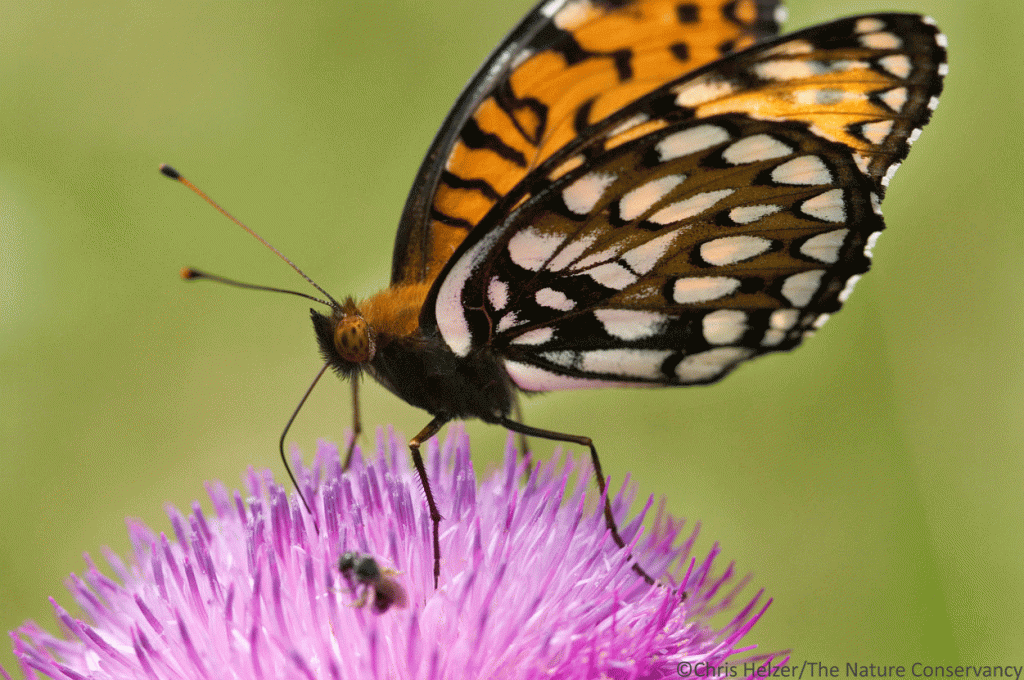
Even under the most thoughtful and careful management, prescribed fire is going to include tradeoffs. These can be especially tricky to navigate when vulnerable species include insects or others that are rare within that prairie and/or the surrounding area. It can be tempting to avoid fire altogether to prevent losses within species that are already struggling to survive.
Sometimes, complete cessation of fire might be the right answer. Just be sure to consider what that lack of fire will mean for the prairie as a whole. That larger community needs to be in good shape to support the at-risk species you’re concerned about, so if it starts becoming overrun by woody vegetation, buried in thatch, or otherwise impacted by a lack of fire, that might affect the fire averse species just as much or more than patchy fire would. If fire isn’t included in your toolbox, make sure you have other ways to provide the management the site requires.
Most importantly, as I said at the beginning of this long ramble, make the best decisions you can and take some kind of action. Afterward, evaluate the results, learn what you can, and incorporate what you learn into what you do next. Be thoughtful, but don’t let unknowns or concerns keep you from being an active manager. Prairies are pretty resilient – it’s why they still exist today. Lean on that diversity and resilience and you and the prairie will come out just fine.

I have found with my own 60 acres t hat are slowly going wild that the lowly pocket gopher has a big impact.
These rodent pests (I spend lots of time and money to keep them out of my tree farm) create one or more dirt mounds a day from their excavations. On those mounds I’ve found thistle (boo!) firewood (cool!) tansy (boo!) white spruce (cheers!),orange hawkweed (double boo), scentless camomile (triple boo), birch trees (Yay!)
If you are managing large areas of prairie one of the tools you can use is the mower. Mowing paths through the prairie gives visitors easier access, and makes them easier to find when they get lost. But paths also are an effective fire management tool.
* Done right they will have less thatch, fewer dry stalks than the areas they split. This makes them natural fire breaks. Note that they are not effective at all times of the year.
* because there is no hay burden on top of the soil, it’s quick to use a 3 share plough to turn a trail into a fire break. With signage, you can tell a volunteer tractor driver exactly where to go.
Like the large majority of species, even the lowly pocket gophers are beneficial components of ecosystems in their native range.
https://www.nwf.org/Educational-Resources/Wildlife-Guide/Mammals/Pocket-Gophers
Yep, pocket gophers are a complex and fascinating addition to prairie disturbances, aren’t they? In addition to the kind of impacts you mention on plant establishment, they also have mysterious (no studies I’m aware of in prairies) impacts on the plant community by the way they selectively feed on roots. Which plants are they eating? I’ve not found anyone who knows. Their mounds are also important habitats for animals, including great places for invertebrates or herps to bask and for species like tiger beetles to hunt. A really nice layer of disturbance in a prairie (and, understandably, a problematic species to deal with in a tree farm!)
I am ruthless about elimination in the farm proper. (10 acres) The 60 acres they ahve free range.
Many good point made here, Chris.
Traditionally farmers used to burn pastures and meadows to improve the growth and to make land easier to manage (mow). This was traditionally done during early spring. To me this is still the right way of doing a prescribed fire; provided there’s a significant amount of thatch from the previous year. Using common sense is never wrong.
Obviously, an uncontrolled wildfire is another matter completely. Just like controlling invasive species never used to be a big problem. But I can see the point in using fire at other times of year when an area is completely dominated by invasive species; even if repeated mowing might be more effective.
Steinar – the use of ‘traditionally’ here is tricky. I would argue that the real traditional use of fire was what was happening long before Europeans entered the picture on the Great Plains. The way native peoples used fire was much more complex than simply trying to ‘clean off’ pastures in the spring.
Well, I agree about the use of ‘traditionally’. I would imagine that back in the day when prairies were enormous and pristine, wildfires (also possibly caused by native peoples) would have been frequent and could have happened at any dry period of year. And I’m not saying that native peoples didn’t use controlled fire. I’m sure they did.
However, the remaining fragmented prairies of today are in my imagination more like what Europe’s semi-natural grasslands used to be like. You’re really lucky to still have them.
So, specifically regarding prescribed fire, the European farmers of old had perfected the use of controlled fire in pastures and meadows etc. over millennia, and I just don’t think anyone can improve on that today.
Disagree.
A: Lots of historical examples of long term farming practices that aren’t particularly efficient or beneficial. See Brazil’s slash and burn aggricutulture for a current example, or oil palm plantations in the Far East.
B: The effectiveness of any given practices is going to be both rainfall and soil dependent.
E.g. burning shortly before heavy rain will result is the ash being carried down hill resulting in poor distribution.
It’s also not clear to me that burning increases the net productivity. Sure: It gives you a flush of green NOW, but does it give you an overall improvement.
Scenario: Partially decomposed thatch acts blanket reducing soil temps and hence evaporation. (Probably true in occasional heavy rains)
Scenario: Partially decomposed thatch keeps any water from reaching the soil at all. It hits the thatch, stays there for a few hours and evaporates. (Probably true in frequent light rains)
Scenario: Rare fires have a large fuel supply, and get hot enough to kill off much of the roots.
Scenario: Frequent fires have small fuel loads, and do very little damage.
I don’t know. I can see whole careers being based on the dynamics of fire ecology.
So-called slash and burn agriculture was in use, at least in northern Europe, until the 18 hundreds. And was an important way of life for some peoples survival. However, I agree that this is obviously not the way forward in today’s world when forests etc. are in serious decline many places.
And yes, burning must be done at the right time, in the right way and at the right interval. I.e. early in spring when the ground is still moist but the thatch is mainly dry. And one needs a little bit of wind to get the fire moving to avoid burning into the soil. Interval could be anything from yearly to once every 30 years. As I understand it.
Anyways, farmers of previous generations were the true experts at this practice. Unfortunately most of these traditions are now completely forgotten and even prohibited; outside of some nature reserves. Which is very unfortunate in my eyes.
cool stuff Chris and mostly I agree–
I am not questioning your generalization of growing season fires but wanted to make sure you saw this. Burning a Little Bluestem while actively growing had much less effect than we expected. we did this some time back because there was a lot of concern about little bluestem and fire– especially growing season fires.
https://repository.arizona.edu/handle/10150/642840
Geez, Sam, way to throw a glass of nuance at my generalizations! That’s very cool data, though. Little bluestem gets a lot of attention up here too. I’ve had people show me clones that look like a healthy green ring of tillers to me after a fire and claim that the fire killed off the center of the plant. My interpretation was very different – that lack of fire caused cattle not to graze the centers of those plants to the point that the thatch build up killed off the center of the plant and the fire just revealed what had already happened!
In terms of growing season fire impacts on C4 grasses, I’d be curious to know if you’ve seen similar responses in other species since that little blue study. My experience with summer fires (July/August) has been a pretty strong (temporary) suppression of C4 grass vigor. I don’t see that as a negative at all, just an understandable response that the grasses recover from very well. I certainly wouldn’t advocate immediate grazing deferments, as long as those plants are allowed to rest and recover at some point within the next year or two. These dang prairies are tough, aren’t they?
Thanks for chiming in.
Thanks so much for raising the awareness that prescribed burning for species richness is very complicated and there will always be winners and losers.
Really appreciate you tackling this difficult issue. It’s part of a robust discussion going on in my prairie ecology classes, and generating a lot of talk with site management. Thank you! So much to learn about fire….
Pingback: Portrait of a Summer Prairie Burn | The Prairie Ecologist